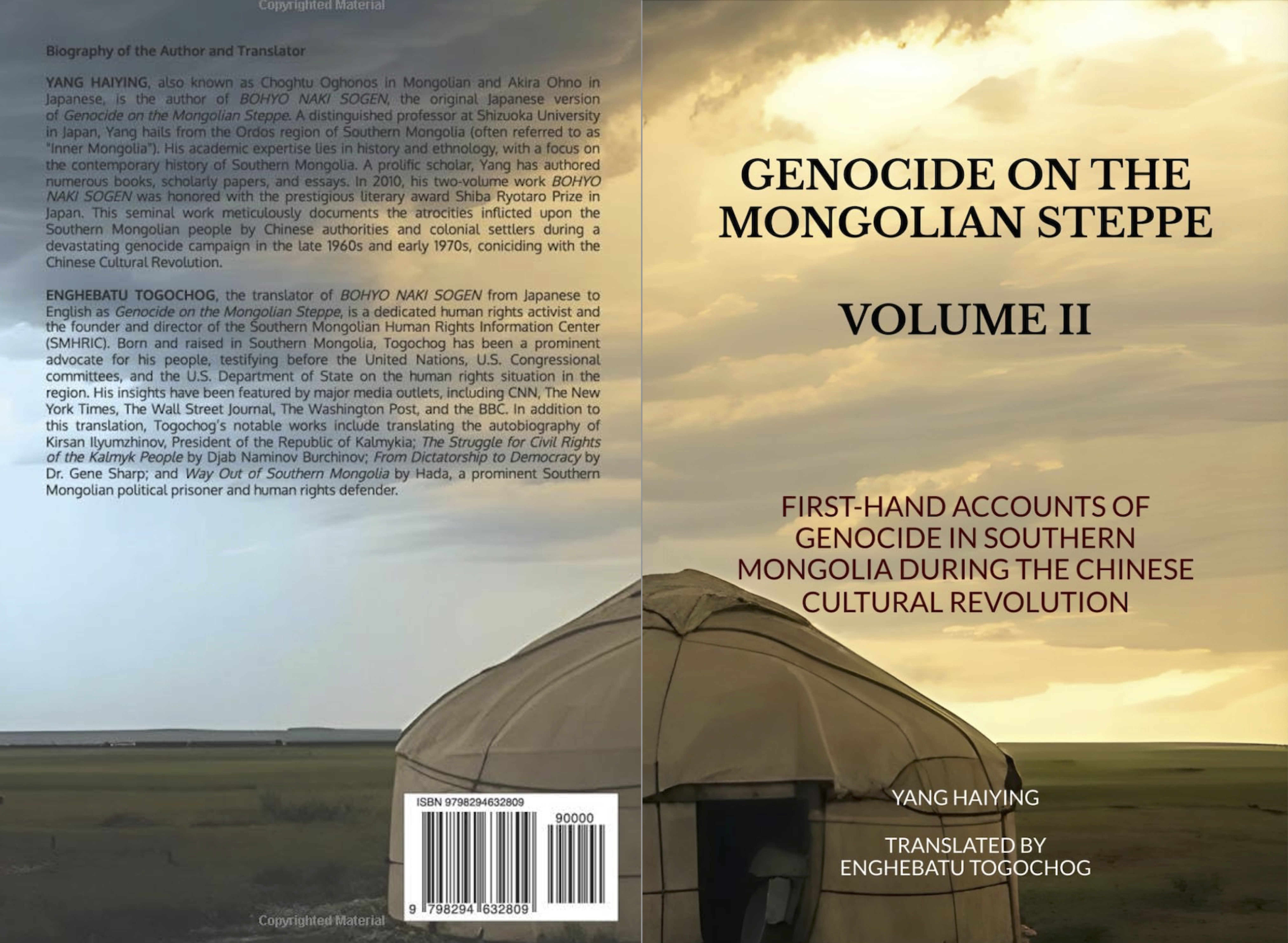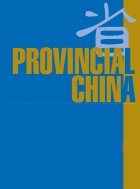| SMHRIC |
| September 23, 2025 |
| New York |
FOR IMMEDIATE RELEASE

Commemorating the 100th Anniversary of the Founding of the Inner Mongolian People’s Party, the Southern Mongolian Human Rights Information Center (SMHRIC) announces the release of Genocide on the Mongolian Steppe: First-hand Accounts of Genocide in Southern Mongolia during the Chinese Cultural Revolution (Volume II), translated from Japanese into English by SMHRIC Director Enghebatu Togochog.
“This year, 2025, marks the 100th anniversary of the founding of the Southern [Inner] Mongolian People’s Party, established in 1925 as the preeminent political organization in Southern Mongolian history,” Togochog stated in the “Translator’s Acknowledgement” of the book.
Both Enghebatu Togochog and Professor Yang Haiying, author of the original Japanese volume BOHYO NAKI SOGEN, assert that the genocide of the Mongolian people during China’s Cultural Revolution was a crime against humanity that has remained largely hidden from the historical record.
“This book is not only a historical recounting but also a solemn dedication to the hundreds of thousands of Southern Mongolians who lost their lives in the genocide campaign executed by the government of China and Chinese colonial settlers in Southern Mongolia,” Togochog noted in the “Translator’s Acknowledgement.”
In 1967, two decades after its annexation of Southern Mongolia, the Chinese Communist regime launched a carefully planned campaign of genocide against the Mongolian population. The operation was known as the “Purge of Members of the National Separatist Organization Southern Mongolian People’s Revolutionary Party.” According to Chinese official statistics, 346,000 Mongolians were persecuted as “national separatists” and “anti-revolutionaries,” and 27,900 were killed. Independent scholars estimate the death toll may have reached 100,000.
“Tragically, this very organization,” referring to the Inner Mongolian People’s Party, Togochog continued, “with its bold vision of national freedom, became the pretext for the Chinese colonial regime to unleash the large-scale genocide documented in this book.”
“In Southern Mongolia, the genocide continues in a different and insidious form: cultural genocide. Following China’s recent escalation of policies aimed at the erasing the Mongolian language, culture and identity, the six million Mongolians of Southern Mongolia face a renewed attack on their last bastion of national identity: their language,” Togochog states in the acknowledgement.
“Yet, Southern Mongolians have demonstrated remarkable resilience and courage in the face of this oppression,” Togochog said, referring to the large-scale Southern Mongolian protest against China’s so-called “Second-generation Bilingual Education” in 2020. “These movements testify to the indomitable spirit of Southern Mongolians who continue to stand up to the Chinese colonial regime with unyielding courage and determination to preserve their language, culture and identity.”





 Beyond
Great Walls: Environment, Identity, and Development on the Chinese
Grasslands of Inner Mongolia
Beyond
Great Walls: Environment, Identity, and Development on the Chinese
Grasslands of Inner Mongolia China's
Pastoral Region: Sheep and Wool, Minority Nationalities, Rangeland
Degradation and Sustainable Development
China's
Pastoral Region: Sheep and Wool, Minority Nationalities, Rangeland
Degradation and Sustainable Development The
Ordos Plateau of China: An Endangered Environment (Unu Studies on
Critical Environmental Regions)
The
Ordos Plateau of China: An Endangered Environment (Unu Studies on
Critical Environmental Regions)